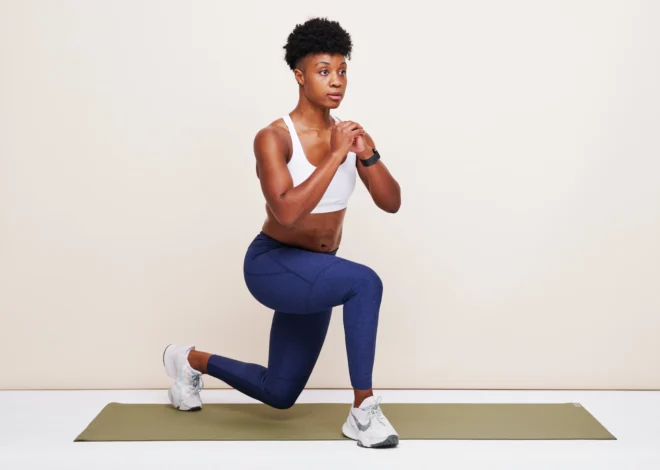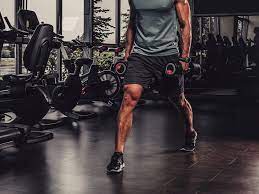
9 Effective Home Leg Exercises for Maximum Gains Without Weights
Introduction
In the introduction, you’ll focus on establishing the importance of strong legs for overall health and fitness. You can explain how the legs are key muscle groups for many daily activities, such as walking, running, and climbing stairs, and how improving leg strength contributes to better mobility, posture, and overall body strength. Since the focus is on home exercises, you’ll also emphasize that you can achieve impressive results without the need for equipment. This section can highlight the convenience of bodyweight leg exercises, which can be done anytime, anywhere, making them accessible to anyone.
Additionally, mention the advantages of exercising without weights, like the versatility of movements and reduced risk of injury. Bodyweight exercises are adaptable to all fitness levels, making them suitable for beginners and experienced individuals alike.
Why Leg Exercises are Important for Overall Fitness
Leg exercises are not just about building muscle; they play a crucial role in overall fitness and health. This section explains the significance of incorporating leg exercises into any fitness routine.
The Benefits of Leg Exercises
Here, you’ll dive into the specific benefits of leg exercises:
– Strength and Stability: Strong legs provide a solid foundation for the rest of the body. They improve balance and stability, which helps prevent falls and injuries.
– Endurance: Leg exercises boost cardiovascular health, which leads to better stamina and energy throughout the day.
– Muscle Balance: Many people overemphasize upper body workouts, neglecting leg muscles. This section would highlight the importance of maintaining muscle balance between the upper and lower body, as imbalances can lead to poor posture, injuries, and decreased athletic performance.
Warm-Up Before Starting Leg Exercises at Home
Warming up is essential to any workout, especially when doing leg exercises. This section explains why a proper warm-up helps increase blood flow to the muscles, improving flexibility and reducing the risk of injury.
Basic Warm-Up Sequence for Leg Workouts
In this subheading, you’ll list easy warm-up exercises that anyone can perform before diving into leg exercises. For example:
– Dynamic Stretches: These improve flexibility and activate the muscles. Examples include leg swings or lunges with a twist.
– Jumping Jacks or High Knees: These increase your heart rate and energize your entire body, getting you ready for the leg exercises.
1. Bodyweight Squats
Squats are a foundational exercise that works the major muscles in the legs, including the quads, hamstrings, and glutes. In this section, you’ll focus on how to perform bodyweight squats properly and why they’re an essential leg exercise.
How to Perform Squats for Leg Strength
Here, you will provide step-by-step instructions on performing squats with correct form.
– Stand with feet shoulder-width apart.
– Lower your body as if sitting back into a chair, keeping your chest up and knees behind your toes.
– Drive through your heels to come back to the initial stance.
Emphasize the importance of maintaining proper form to avoid injury and get the most out of the exercise. Then, discuss the benefits of squats, such as:
– Strengthening quads, hamstrings, and glutes.
– Improving flexibility in the hips and ankles.
– Boosting overall lower body endurance.
Squats are a powerful exercise because they target multiple muscle groups and can be modified to increase intensity, making them perfect for home workouts.


2. Lunges
Lunges are a versatile and foundational leg exercise that focuses on improving both strength and balance. This section should introduce lunges as a functional movement that targets multiple muscle groups simultaneously, such as the quads, glutes, hamstrings, and calves. Lunges also engage your core for stability, making them an excellent full-body exercise.
Lunges: A Classic Leg Exercise for Strength and Balance
In this subheading, explain how lunges work by engaging different parts of the leg muscles during each step. The forward motion challenges the quads, while the backward or reverse motion engages the glutes and hamstrings. Lunges also require stability, which improves coordination and balance.
Additionally, mention lunge variations such as reverse lunges (stepping backward rather than forward) and side lunges (stepping out to the side), which target different muscles and increase overall leg strength and mobility.
3. Step-Ups
Step-ups are another effective bodyweight exercise that can be easily performed at home using a chair, bench, or sturdy platform. They mimic the motion of climbing stairs and help build powerful leg muscles.
Step-Ups: A Simple Yet Effective Leg Exercise
This section provides instructions for performing step-ups correctly. It’s important to emphasize keeping the knee aligned with the toes as you step up and fully extending the leg at the top to engage the glutes. Switch between legs to promote even muscle growth.
Explain how step-ups mainly build strength in the quadriceps, hamstrings, and gluteal muscles. They also improve lower body stability since you are working one leg at a time, which requires coordination and balance. The difficulty of step-ups can be increased by raising the platform height or performing them at a faster pace.

4. Glute Bridges
Glute bridges are an excellent exercise to target both the glutes and hamstrings, while also engaging the core. This exercise is especially beneficial for those who sit for long periods as it activates the posterior chain (back of the body).
Glute Bridges for Leg and Core Engagement
In this section, explain how to properly perform glute bridges. The key is to lie flat on your back, with knees bent and feet flat on the floor. You then lift your hips toward the ceiling while squeezing your glutes, keeping your core engaged.
Describe the **benefits** of glute bridges, which include strengthening the glutes, hamstrings, and lower back. They also help with posture and can improve hip flexibility, making them a valuable addition to any leg workout routine.
5. Bulgarian Split Squats
Bulgarian split squats are a more advanced, single-leg exercise that helps increase strength, balance, and coordination. By using a chair or elevated surface to place one foot behind you, this movement isolates one leg at a time for greater muscle engagement.
Bulgarian Split Squats: A Powerful Single-Leg Exercise
Here, provide step-by-step instructions on how to perform Bulgarian split squats. Position one foot securely on a chair or bench behind you, keeping the opposite foot grounded on the floor. Drop down into a squat, making sure the knee of your front leg aligns with your toes, then push upward, engaging the front leg to rise back up.
Explain why this exercise is beneficial: because it’s a single-leg movement, it helps correct muscle imbalances, improves coordination, and builds strength in the quads, hamstrings, and glutes. It’s also an excellent way to challenge your balance and core stability.
6. Calf Raises
Calf raises are an easy-to-perform yet highly effective exercise that targets the lower leg muscles, particularly the calves. They are often overlooked, but strong calves contribute to better balance and athletic performance.
Calf Raises for Strong Lower Legs
Provide step-by-step instructions on how to perform calf raises. Stand with your feet hip-width apart and raise your heels off the ground, balancing on the balls of your feet, then slowly lower back down.
Include variations to increase the difficulty, such as doing calf raises on a step for a greater range of motion or adding one-legged calf raises for added balance and strength challenges. Strong calves contribute to supporting lower body movements and can help minimize the chances of injuries like ankle sprains.

7. Wall Sits
Wall sits are an excellent isometric leg exercise that builds muscular endurance. In this section, you’ll explain that a wall sit is performed by positioning the back against a wall, bending the knees at a 90-degree angle, and holding that position for as long as possible. It’s a simple yet effective way to target the quads and increase leg endurance without movement. You’ll highlight the importance of proper form, such as keeping the knees in line with the toes and maintaining a neutral spine. This exercise strengthens the quads, stabilizes the core, and helps improve stamina.
8. Donkey Kicks
The donkey kick is an excellent exercise for targeting the glutes and hamstrings, which are critical muscles for lower body strength and sculpting. In this section, you’ll give clear instructions on how to perform donkey kicks properly, starting on all fours and kicking one leg back and upward while keeping the core engaged. This helps tone the glutes and hamstrings while also improving hip mobility. The exercise is great for lower body sculpting, particularly for those looking to build a well-rounded leg routine.
9. Side-Lying Leg Raises
Side-lying leg raises are particularly effective for engaging the hip and outer thigh muscles, areas that are often overlooked in other leg exercises. Here, you’ll explain how to perform this exercise by lying on one side and lifting the top leg while keeping it straight. This movement targets the **abductor muscles** in the outer thigh, helping to strengthen and tone them. Tips for increasing the challenge can include slowing down the movement or holding a leg at the top position to engage the muscles more intensely.

Creating a Home Leg Exercise Routine
In this section, you’ll offer practical advice on how to structure a weekly leg workout using the exercises described earlier. The key is to balance different types of exercises—like squats, lunges, and isometric holds like wall sits—to ensure full lower body development. You’ll also discuss the importance of incorporating rest and recovery days to allow muscles to grow and repair, which is crucial for maximizing gains. This subheading will help readers understand how to build a routine that can be adapted to their goals and fitness level.
Common Mistakes to Avoid During Leg Exercises
Errors made during leg exercises can diminish the workout’s benefits and elevate the likelihood of getting injured. In this section, you’ll discuss common errors like poor form during squats (e.g., knees caving in), not engaging the core during donkey kicks, or leaning forward too much during lunges. Correcting these mistakes will lead to better results and help prevent injuries. Emphasizing the importance of proper technique can be key in making workouts both effective and safe.
Conclusion:
The conclusion will summarize the key benefits of performing leg exercises at home without weights, such as the convenience, accessibility, and effectiveness of these movements. It will also encourage readers to stay **consistent** in their workout routines and to focus on long-term goals. Remind them that results come with time and effort, and maintaining proper form and consistency is key to success.—

FAQs
Can I build leg muscle without using weights?
Yes, bodyweight leg exercises such as squats, lunges, and step-ups can effectively build muscle when done with proper form and consistency. Adding variations and increasing intensity can further enhance muscle growth.
How often should I do leg exercises at home?
It’s recommended to perform leg exercises 2-3 times a week, allowing rest days in between for muscle recovery and growth.
Do leg exercises help in fat loss?
Yes, leg exercises can help burn calories and increase overall metabolism, leading to fat loss when combined with a healthy diet.
Can I perform these leg exercises if I have knee pain?
Some exercises, like squats and lunges, might need modification if you have knee pain. It’s advisable to seek guidance from a doctor or physical therapist prior to beginning any exercise regimen.
How can I make leg exercises more challenging without weights?
You can make leg exercises more challenging by slowing down the tempo, adding more repetitions, trying single-leg variations, or incorporating higher-intensity movements like jump squats.
For more details: [visit here]
VIDEO : [visit here]








2 thoughts on “9 Effective Home Leg Exercises for Maximum Gains Without Weights”